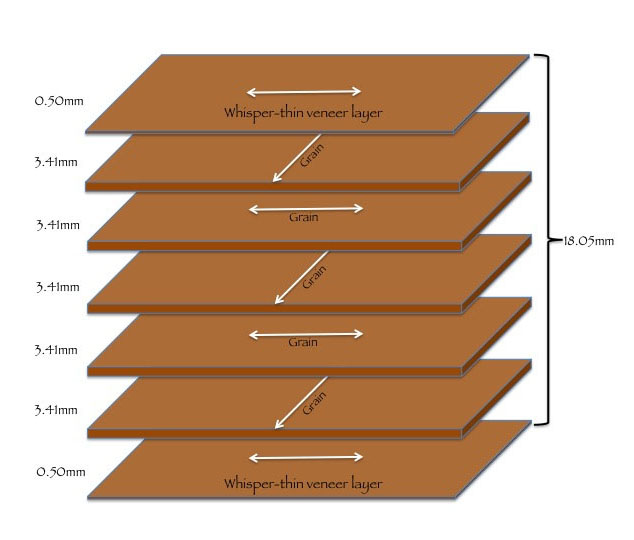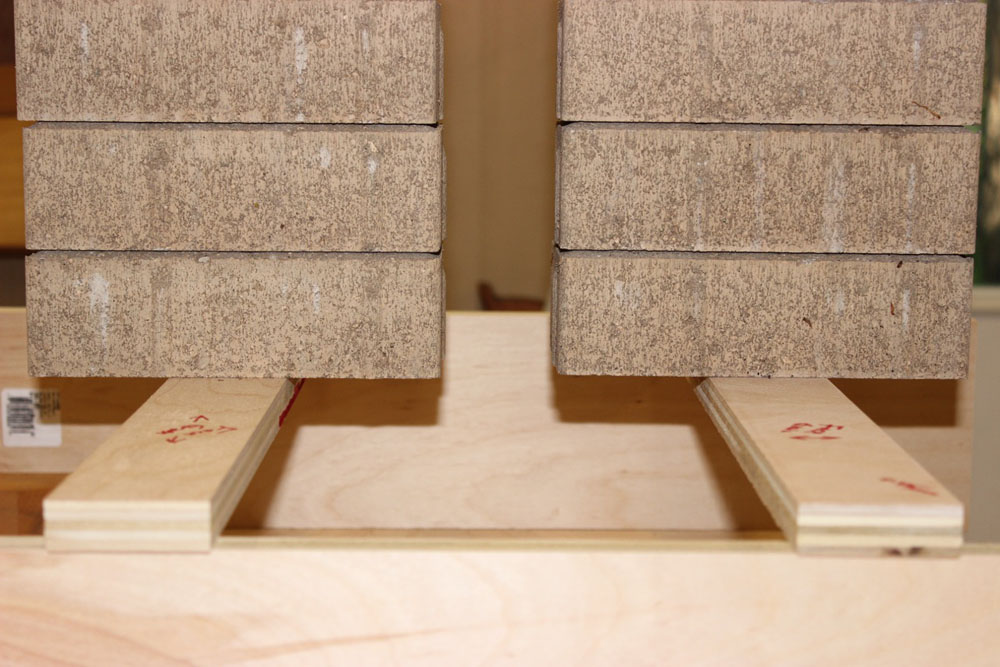Thinking of starting a woodworking project with plywood? Well, you might be wondering, does plywood grain direction matter? Let’s dive in and find out! 👇
When it comes to plywood, the grain direction can impact the strength, stability, and appearance of your project. 🌾 Understanding how the grain direction influences plywood can help you make informed decisions and achieve the best results.
So, why does plywood grain direction matter? 🧐 By following the grain direction, you can ensure that the plywood behaves as expected, minimizing any potential issues and maximizing its performance. Let’s take a closer look at how the grain direction can influence your woodworking endeavors. 🛠️
The direction of the grain in plywood does matter. It affects the strength, stability, and appearance of the finished project. When cutting plywood, it is best to align the grain direction with the longest dimension of the panel for optimal strength. This helps prevent warping and ensures better stability. However, for aesthetics, you may choose to align the grain in a different direction. Consider both functional and visual factors when determining the grain direction in plywood.

Does Plywood Grain Direction Matter?
In the world of woodworking, plywood is a versatile and popular choice for a variety of projects. From furniture to cabinetry, it offers strength, stability, and an attractive appearance. However, one question that often arises is whether the grain direction of plywood matters. Does it affect the strength or aesthetics of the final product? In this article, we will explore the importance of plywood grain direction and how it can impact your woodworking projects.
Understanding Plywood Grain Direction
Plywood is made by layering thin sheets of wood veneer together, with each layer known as a ply. The direction of the grain in these layers can vary, resulting in different types of plywood such as rotary-cut, plain-sliced, quarter-sliced, and rift-sawn. The grain direction refers to the alignment of the wood fibers in each ply.
The most common plywood grain direction is cross-grain, where adjacent plies have their grain running perpendicular to each other. This construction provides dimensional stability, reduces the risk of warping, and distributes the stress evenly across the panel. Conversely, some types of plywood, such as rift-sawn, have a consistent grain direction throughout the panel. This can result in a more uniform appearance but may also lead to potential issues.
The Impact on Strength and Stability
The grain direction of plywood can have a significant impact on its strength and stability. Cross-grain plywood is generally stronger and less prone to warping than plywood with a consistent grain direction. This is because the alternating grain patterns allow for better distribution of stress and minimize the risk of splitting or breaking.
On the other hand, plywood with a consistent grain direction, such as rift-sawn or quarter-sliced, may be more susceptible to splitting along the grain lines. This can be particularly problematic in areas where screws or nails are inserted. It is worth noting that the strength and stability of plywood are also influenced by factors such as the type of wood used, the number of plies, and the quality of the manufacturing process.
The Aesthetic Considerations
In addition to its impact on strength and stability, plywood grain direction can also affect the aesthetics of the final product. Cross-grain plywood often showcases a more varied and visually appealing pattern, with the alternating grains creating a unique and natural look. This can be desirable for projects where the plywood will be visible, such as cabinet doors or tabletops.
Alternatively, plywood with a consistent grain direction, such as rift-sawn or quarter-sliced, offers a more uniform appearance with straight grain lines. This can be advantageous if you are looking for a clean and modern aesthetic or if you plan to stain or paint the plywood in a solid color.
In conclusion, the grain direction of plywood does matter and can impact both the strength and aesthetics of your woodworking projects. Cross-grain plywood is generally stronger and more stable, while plywood with a consistent grain direction can offer a more uniform appearance. Understanding the different types of plywood and their grain directions will help you make informed decisions and achieve the desired results in your woodworking endeavors. Remember to consider factors such as project requirements, personal preferences, and the specific characteristics of each type of plywood before making your selection.
Key Takeaways:
- Plywood grain direction does matter and can affect the strength and appearance of the final product.
- When using plywood for structural purposes, such as floors or roofs, it is important to align the grain direction perpendicular to the supports for optimal strength.
- For aesthetic purposes, plywood with a visible grain should be placed with the grain direction in a consistent and desirable pattern.
- Choosing the right plywood with the desired grain direction can prevent warping and increase the overall quality of the project.
- Understanding the grain direction of plywood can help you make informed decisions and achieve better results in your woodworking projects.
Frequently Asked Questions
Does the direction of plywood grain affect its strength?
Yes, the direction of plywood grain does indeed affect its strength. Plywood is made up of multiple layers of thin wood veneers, known as plies, that are glued together. The grains of these plies run perpendicular to each other, creating a strong and stable structure. The outer layers, known as the face and back veneers, have their grains running parallel to each other, while the inner plies have their grains running perpendicular to the outer layers. This alternating grain direction enhances the strength and stability of plywood.
Can plywood be cut across the grain?
Plywood can be cut across the grain, but it may result in a weaker piece of wood. The grain direction affects the strength and stability of plywood. Cutting across the grain can weaken the overall structure because it disrupts the natural strength provided by the alternating grain directions. It is generally recommended to cut plywood with the grain to maintain its strength and stability.
What happens if plywood is installed with the grain in the wrong direction?
If plywood is installed with the grain in the wrong direction, it can compromise the strength and stability of the structure. Plywood is specifically designed with alternating grain directions to enhance its strength. Installing plywood with the grain in the wrong direction can lead to weakened joints, increased risk of warping and splitting, and reduced overall structural integrity. It is important to follow the manufacturer’s guidelines and ensure that the grain direction of the plywood is aligned correctly during installation.
Does the grain direction of plywood affect its appearance?
Yes, the grain direction of plywood can affect its appearance. The face and back veneers, which are the visible layers of plywood, have their grains running parallel to each other. This parallel grain pattern creates a uniform and aesthetically pleasing appearance. However, the inner plies of plywood have their grains running perpendicular to the face and back veneers. This can result in visible lines or patterns on the edges of the plywood sheet. Depending on the desired appearance, the grain direction of plywood may need to be taken into consideration.
Are there specific applications where the grain direction of plywood matters more?
Yes, there are specific applications where the grain direction of plywood matters more. For example, in construction and woodworking projects that require maximum strength and stability, such as load-bearing structures or furniture, the grain direction of plywood is critical. The alternating grain directions provide added strength and prevent warping or splitting. However, in applications where strength is less of a concern, such as decorative paneling or non-structural crafts, the grain direction may not be as significant. It is important to consider the intended use and requirements of the project when determining whether the grain direction of plywood matters.

Summary
So, does plywood grain direction matter? The answer is yes! Placing the grain perpendicular to each layer ensures a stronger and more stable plywood. It also prevents warping and splitting. Remember to check the grain direction when working with plywood for better results!
